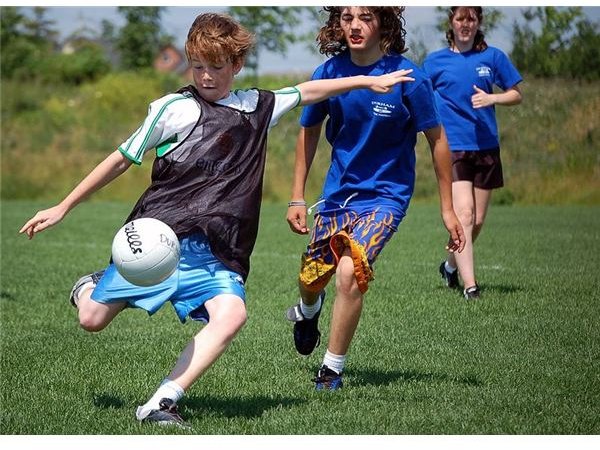Teach Children to Deal with Conflict & Bullying
The Basics of Discipline
Children often cannot express their feelings of tiredness, frustration and jealousy in a way that adults find rational, and they often resort to crying, temper tantrums, fighting and behaviors that are disruptive to others. Children learn how to deal with conflict at a young age when their parents first encourage good behavior and gently correct bad actions.
-
For parents, caregivers and teachers the best way to teach discipline is to reinforce good behavior and avoid dealing with bad behavior in the form of physical or verbal punishment. These can result in children o
ften having trouble learning to control themselves and damages the quality of the parents’ relationship with them.
-
Making and explaining fair rules sets the tone for how kids are expected to behave.
-
Setting up consequences that are appropriate for the age of the child, giving ‘time-out’ to provide children time to calm down, and withdrawal of privileges are effective in teaching kids the value of behaving within a set of rules.
Resolving Conflicts
With the right discipline, kids will learn how to deal with playmates and siblings because they know the basic guidelines about what is right and wrong and understand that the same behaviors are expected from others.
However, even with siblings and playmates, children sometimes fight or resort to high levels of aggression and violence such as biting, scratching, hitting, pinching, pulling hair, throwing things, kicking and wrestling.
To coach them on how to resolve conflicts, adults can:
- Help the kids identify how they are feeling and how to express their emotions in an appropriate manner.
- Help them to define what they really want, and ask them what they would like to have happen.
- Help them to understand the other person’s feelings and to learn how to respect that perspective. Adults can suggest that they ask the other person to say how they are feeling and what they would like to have happen.
- Encourage them to come up with several different and interesting ways that they could solve a problem with another person and to choose the options that they think work best for everyone.
- Teach kids to improve their social skills, which is also a helpful way for them to learn to adjust and form meaningful friendships.
Fighting with siblings is sometimes more intense than with other playmates because of their close contact and because of other issues in the family. In some cases, parents sometimes face a dilemma regarding when to intervene. In general, applying the same principles of dealing with conflict, parents should take action when:
- There is danger of serious pain or injury.
- There are prolonged or repeated conflicts about the same issue.
- There is an imbalance of power.
- The kids become extremely emotional and cannot control themselves.
Teaching Kids to Protect Themselves
A child may be well behaved, but parents are often concerned that others may behave in a physically or emotionally threatening way around them. Violence in school may be a problem for some, although others may not be aware of it or are just trying to deny it as part of normal school life.
To protect a child from bullying in school, the parent must first be able to recognize the warning signs such as when a child gets hurt, is scared to go to school, often feels sick, has damaged or lost properties or acts aggressively. In these cases, parents must ask their child what is going on and assure him or her that bullying is not okay.
Parents must teach their kids strategies for self-protection such as standing up tall, looking the aggressive person in the eye, and telling him or her in a confident manner to stop hurting them. They should coach their kids about how to deal with conflict appropriately and encourage them to role-play dealing with difficult situations.
When to Seek Help
Sometimes, in spite of the parents’ efforts to discipline their kids, they are overwhelmed by the aggressive behavior the kids demonstrate. Proper evaluation and management may be obtained by seeking help from a child psychiatrist, especially if children persistently demonstrate symptoms of hyperactivity, dangerous behavior that can be life threatening, disobedience and defiance, and difficulty in learning.
When discipline and coaching are not enough to deal with ordinary situations of bullying and school violence, parents may need to seek help from school authorities; these individuals may not be aware that this is happening in school.
Conflict is a normal part of a child’s life; even adults have to deal with it from time to time. When children learn how to deal with conflict, they learn to adjust and lead a healthy social life that will not only keep them safe and happy in their present environment but will also prepare them for the challenges and conflicts of adult life.
References
- Spengler, Leanne, “Helping Children Resolve Conflict,” Education.com, http://www.education.com/reference/article/Ref_Helping_Resolve/
- Australian Psychological Society, http://www.psychology.org.au/publications/tip_sheets/bullying/#s10
